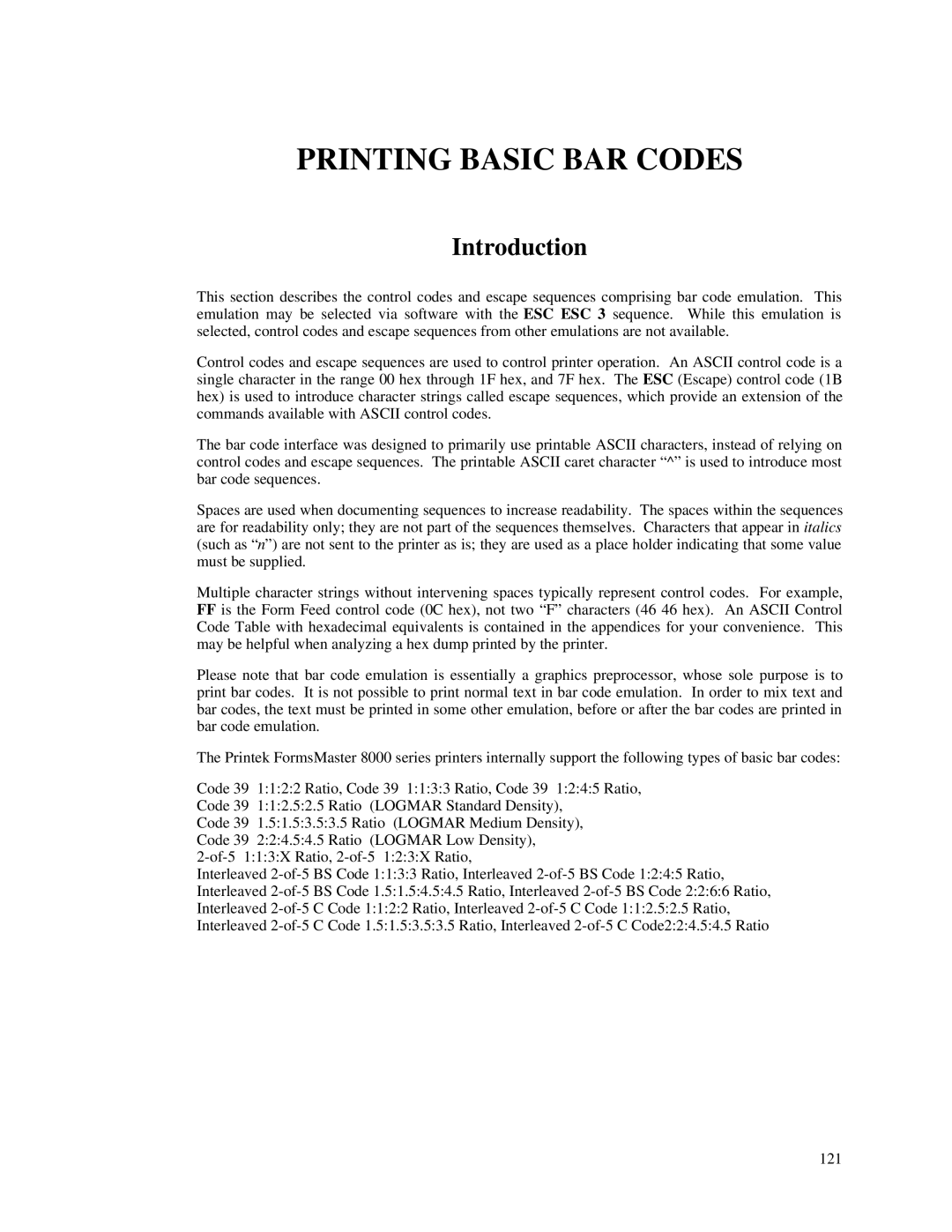PRINTING BASIC BAR CODES
Introduction
This section describes the control codes and escape sequences comprising bar code emulation. This emulation may be selected via software with the ESC ESC 3 sequence. While this emulation is selected, control codes and escape sequences from other emulations are not available.
Control codes and escape sequences are used to control printer operation. An ASCII control code is a single character in the range 00 hex through 1F hex, and 7F hex. The ESC (Escape) control code (1B hex) is used to introduce character strings called escape sequences, which provide an extension of the commands available with ASCII control codes.
The bar code interface was designed to primarily use printable ASCII characters, instead of relying on control codes and escape sequences. The printable ASCII caret character “^” is used to introduce most bar code sequences.
Spaces are used when documenting sequences to increase readability. The spaces within the sequences are for readability only; they are not part of the sequences themselves. Characters that appear in italics (such as “n”) are not sent to the printer as is; they are used as a place holder indicating that some value must be supplied.
Multiple character strings without intervening spaces typically represent control codes. For example,
FFis the Form Feed control code (0C hex), not two “F” characters (46 46 hex). An ASCII Control Code Table with hexadecimal equivalents is contained in the appendices for your convenience. This may be helpful when analyzing a hex dump printed by the printer.
Please note that bar code emulation is essentially a graphics preprocessor, whose sole purpose is to print bar codes. It is not possible to print normal text in bar code emulation. In order to mix text and bar codes, the text must be printed in some other emulation, before or after the bar codes are printed in bar code emulation.
The Printek FormsMaster 8000 series printers internally support the following types of basic bar codes:
Code 39 1:1:2:2 Ratio, Code 39 1:1:3:3 Ratio, Code 39 1:2:4:5 Ratio, Code 39 1:1:2.5:2.5 Ratio (LOGMAR Standard Density),
Code 39 1.5:1.5:3.5:3.5 Ratio (LOGMAR Medium Density), Code 39 2:2:4.5:4.5 Ratio (LOGMAR Low Density),
Interleaved
121
